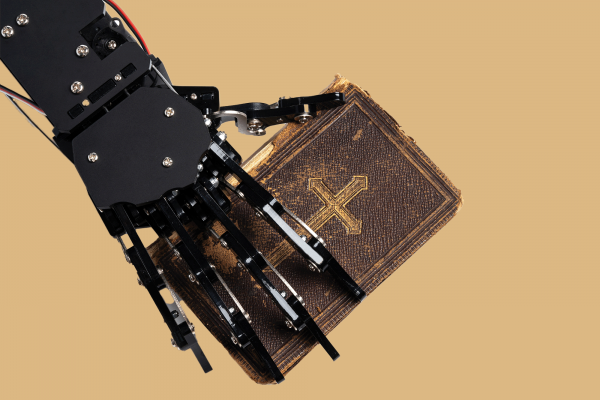“I hear, when I push people a little harder, ‘Well, I don’t know whether I want brown grandbabies.’ I mean, that’s also a part of it. It’s the intermarriage that is going on and the cultures that are conflicting with each other.” – Tom Brokaw
When I first heard my son’s heartbeat, it did not beat in Spanish.
When my white wife held her baby boy and girl to her chest for the first time, she cried. Falling from her cheeks onto their heads, her tears baptized them into a world that was confused and colliding and in desperate need of grace.
But she did not cry because she had brown babies.
Nor, did her parents. Her father once jokingly proclaimed his genealogy to be a long line of east Texas dirt farmers. Pentecostals who spent as much time praying for rain as salvation. When I met him, we bonded over black coffee and Bartleby the Scrivener allusions.
My marriage and my family is not unique, but indicative. U.S.-born Latinos make up nearly four of 10 interracial marriages, most of whom are with whites spouses.
We met in college. With all their shortcomings, college campuses are one of the last places in the country where policies attempt to construct diverse communities — more diverse than our neighborhoods, public schools, or even our pews. Within those communities, diverse ideas are taught as well. Garcia Lorca and Dickenson are read in the same class. Volcanology and sociology are taught at the same time. People from different states, economic classes, and religions live, learn, and fall in love with one another.
"They ought not to be just codified in their communities but make sure that all their kids are learning to speak English, and that they feel comfortable in the communities." - Tom Brokaw
Families like mine make one world out of two. We teach our children English. It was the language I was formally educated in from kindergarten through graduate school. It’s the language that I am most comfortable with, the language I most read in and write in. It’s the language that I wrote my weddings vows in and pray over my children with.
We teach them Spanish too. I use Spanish to convey love, because of its melodramatic ability to express profundity in the quotidian. I call my children at various moments in the day mi vida, mi cielo, mi amor. I tell them regularly, “te amo sin saber cómo, ni cuando, ni de dónde” as they run past me on their way to play.
And my children use both as they see fit.
“We can't restore our civilization with somebody else's babies.” – Rep. Steve King (R-Iowa).
Despite, or maybe because of, the fluidity of our bilingualism and biculturalism, many people may see us as not assimilating.
I’ve been glared at for speaking Spanish with my grandma in a store.
I’ve been told to go back where I came from — even though I was born on an Air Force base in California.
I’ve been embraced my wife’s family, but I’ve also been spit at by people protesting the presence of people like me and my children.
The contradictions surrounding the notion of assimilation are frustrating.
But brown babies and grandbabies will continue to remake and challenge the very language we use to describe the nation, because in our home milagros and lagrimas rhyme — not in word, but in experience.
Got something to say about what you're reading? We value your feedback!







